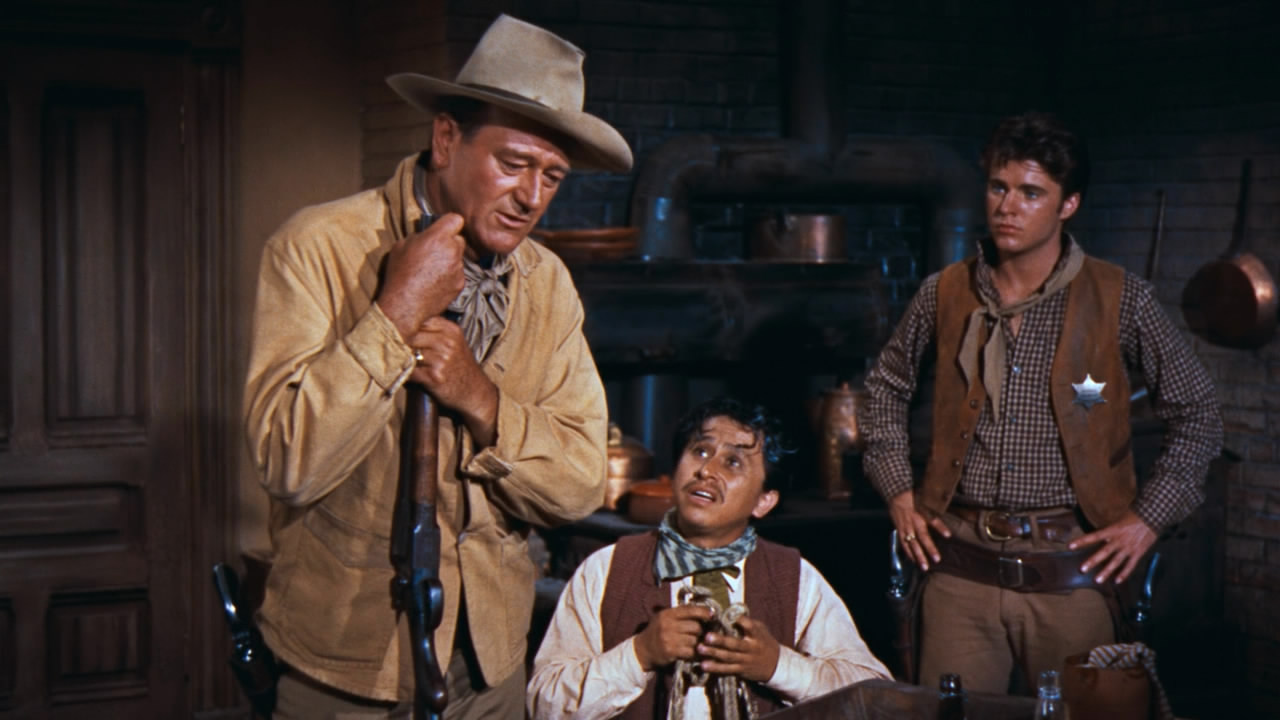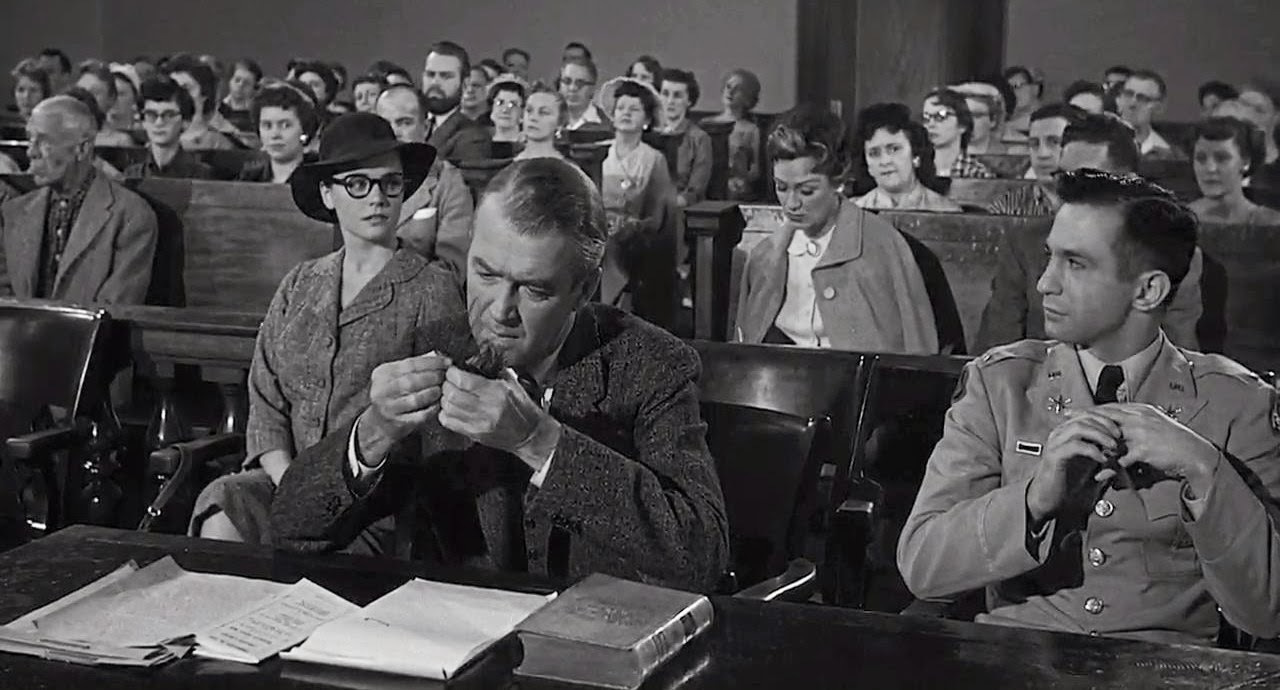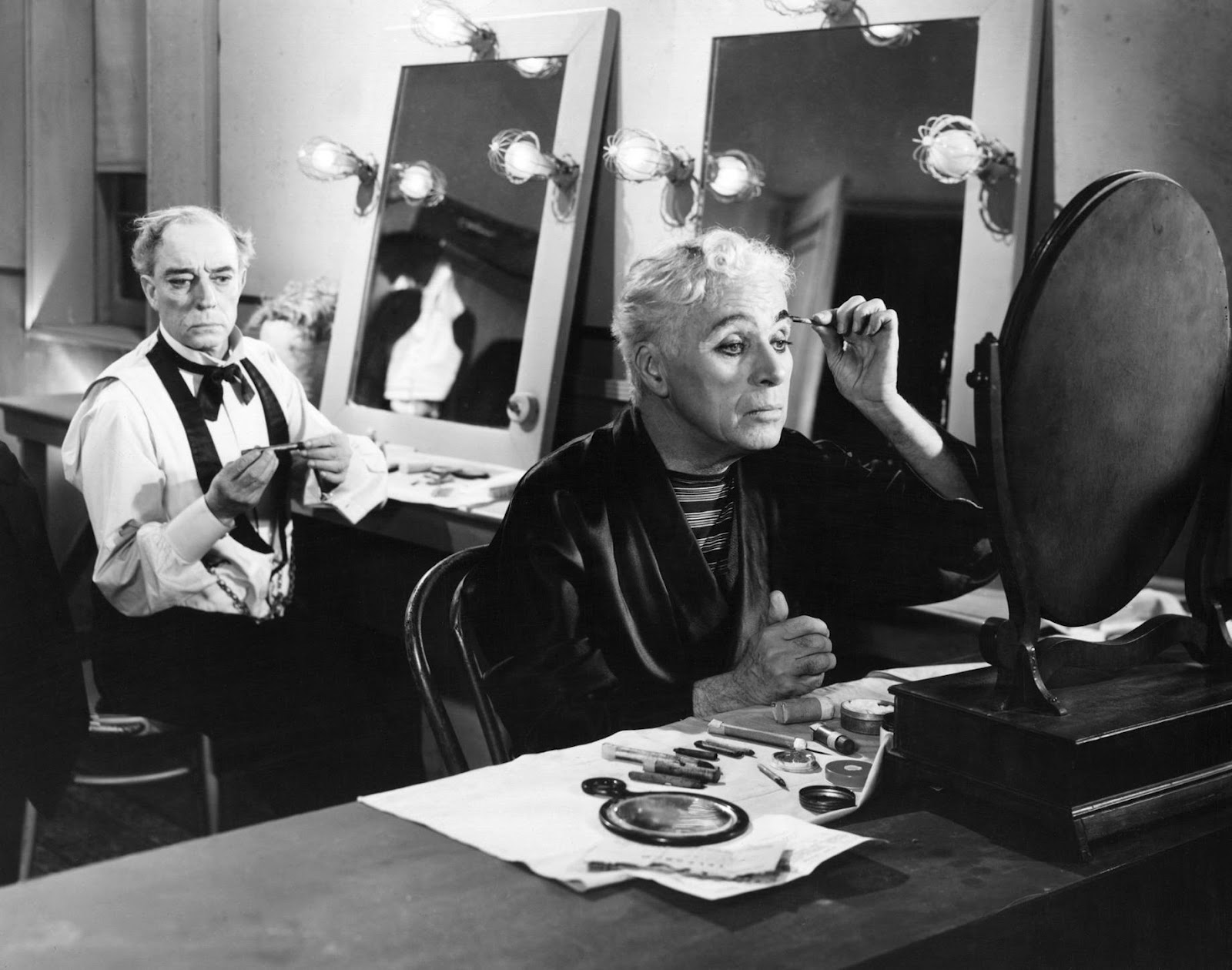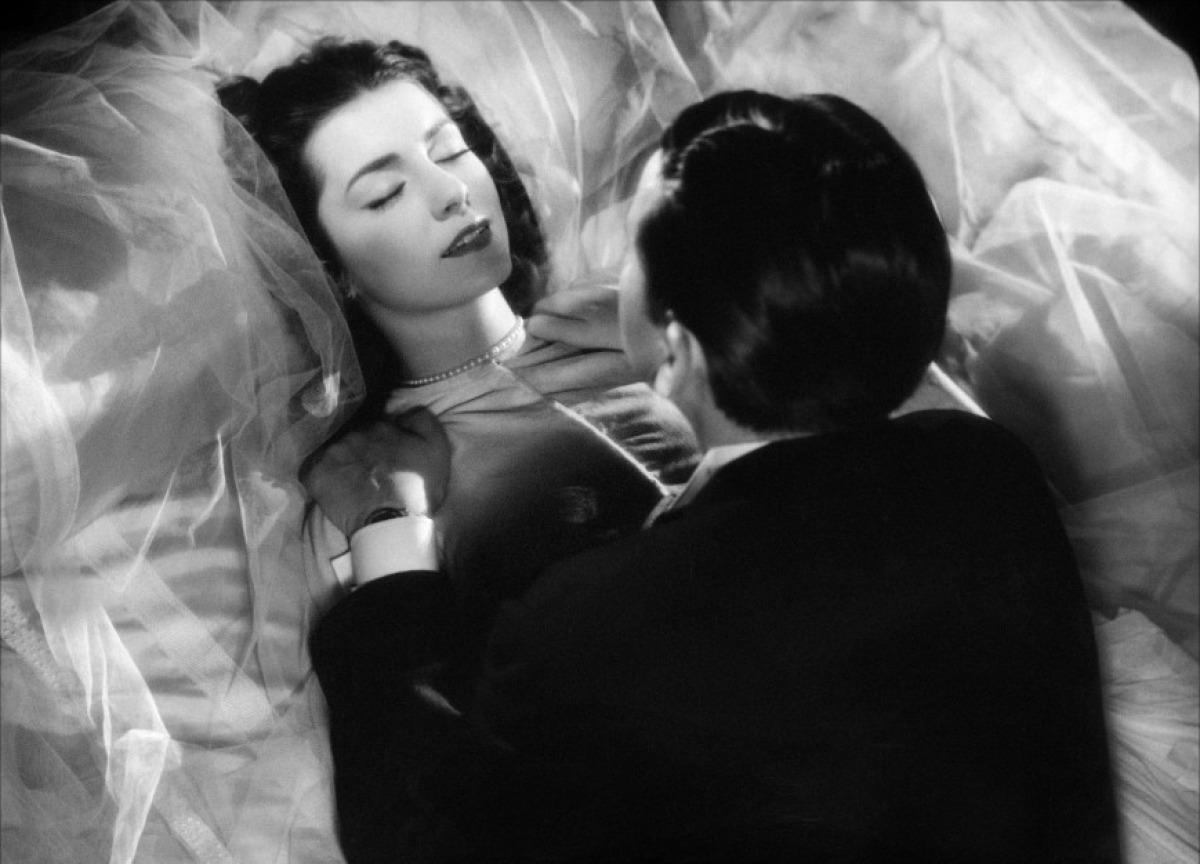
By Jacques Rancière
Originally published as ‘La politique des auteurs, ce qu’il en reste’, in Cahiers du cinéma, n° 559, July-August 2001.
A final word, young man. Face to face, fine, but in society, in public, don’t ever talk about cinema. Never ever. It shows a lack of taste, a terrible lack of taste. And yet, Louis Skorecki talks about it every day in the Libération. It’s just that he’s not a young man anymore and that he speaks to the youngsters about something they have not known: the time of cinema, the time of the innocence of an art that wasn’t an art – small budget films and great thrillers, sublime melodramas, works by obscure authors that were shown in cinemas in obscure neighborhoods. It reminds us of the testimentary position of Godard or Daney’s last texts, or even of Lourcelles’ dictionary, evoking the happy times of artisans and studios, John M. Stahl or Christian-Jaque, all killed by the Nouvelle vague and the auteurism of Antonioni, Bergman, Godard or Bresson. In Skorecki’ book, they are called Lynch, Kiarostami, Wong Kar-Wai or Tarentino.
The expeditious style of his reviews, assembled under the title Les violons ont toujours raison (The violins are always right), is not the same as that of his old compagnons Serge Daney (La Maison cinéma et le Monde) and Jean-Claude Biette (Qu’est-ce qu’un cinéaste?). But in all three books it’s the same generation that draws up the balance of the ‘politique des auteurs’. Skorecki’s dazzling notes and Biette’s meticulous analyses extend the assessment of the 1970’s when Daney analyzed the Pyrrhic victory of this politics. We know the conclusions he has drawn from that. La Maison Cinéma et le Monde, a collection of articles from the period between 1962 and 1981, allows us to take some distance from the dichotomies he would fall into sometime later, showing us the road leading from the promotion of the author to his denunciation. Yet there is nothing straightforward or evident about this. In a way, it’s always the same thing that has to be figured out in the praise and revocation of the author: the intimate and paradoxal relation between the autonomous force of the cinematic art and the consideration of an essential heteronomy. Which is in itself a double heteronomy. It is the dependence of the art of the ‘metteur-en-scène’ on what puts him to work: screenplay, assignment, industry. But it is also the presence within this art of something not-mastered that is more fundamental: the capacity of matching the decision of putting a camera in place with what it decides for itself, what it inscribes in the film without the knowledge of the artist: power relations, obscure tradition of art, childhood secret.
The ‘politique des auteurs’ was a way of settling the first relation, showing that these artisans who put their know-how in the service of stories of thwarted romance, troops to conduct or banks to rob, were full-grown artists. It would be an error, said the young Serge Daney, to see in the ”humble western” Rio Bravo only “an ensemble of beautiful fights between extras”. Every shot, just like every melody in The Art of Fugue, only exists in relation to others, in a system that is closed on itself. But it’s also a view on the world, a moralist point of view that is asserted in the trajectory that connects the transformation of Chance (John Wayne) with the rehabilitation of Dude (Dean Martin). Under the name of “mise-en-scène” was then proposed an equivalence between the autonomization of form, by which the artisan overturned his dependance of the industry, and the ethical declaration of a point of view on the world.

Undoubtably this reversal was precarious. The lucid filmmaker Otto Preminger was in the same position as his character, the lawyer Paul Biegler (Anatomy of a Murder). He declared his mastery by treating the case that happened to fall in his lap (a dubious murder, a successful novel). But he also found himself, after having demonstrated “for a few seconds” the power of his art, in the position of an unpaid lawyer. But above all the ‘politique des auteurs’ stumbled against the indetermination of concepts – look, point of view, morality – that asserted the common force tied to the exercise of the author’s formal power. This much-touted “point of view”, as easily assimilated by the Mac-mahonien “humanism” as by the Brechtian distanciation, was condemned to fall back on a formal singularity and to recover classical synonyms: the style of the writer or the hand of the artist, this pure signature of which Hegel had already shown that it in the end brings back the act of the artist to where he is – or believes to be – the only master of his matter and the means of making it into a form.
Between the critic, the author and the audience, a singular dialectics was put in place. Around 1968 the critic, formerly devoted to showing the hand of the artist in the realization of the ordinary assignment, changed roles: he became attached to revealing what the position of the author concealed: the place of his camera, the political and social places to which it assimilated itself, the function assigned or denied to the ‘hors-champ’. But he also broke with the “contract of innocence” (Biette) in which the work of the mise-en-scène on the realized and transformed assignment was put into concordance with the erratic tradition of cinema and the ambiguous expectations of the spectators. He then started to participate in the movement that, in the reality of production and consumption, liquidated the floating negotiation between industry, pleasure and art that was till then practiced in the singularity of films. He replaced it with a complicity of knowledge asserted on the back of the film and its characters: knowledge jointly drawn by the author and the spectator from the fresh flesh of naive characters – such as Doillon’s children, who are for Daney the typical illustration. Eventually the function of the critic vanished in the dual relation according to which the educated spectator no longer goes to see films, but productions of this or that author, master of his effects and exempted from proving the always anticipated force of his art.

The critic then once again changes position. After having emphasized, in the cinephile manner, the positivity of the author, before revealing, in the semiotico-marxist manner, what it omitted, he then became attached to manifesting, in the lacanian way, the positivity of the omitting itself, the failure by which the force of a film is accomplished. After having denounced the unanimist naturalism of the leftist fiction (“fiction du gauche”) or the indulgence of the retro style towards the “twilight zone” of mankind, he celebrates the documentary (Torre bela) which – after the fact – gives the leftist idea this sensible flesh of which the leaders and propagandists, at the “right” time, had dreamed in vain. After having celebrated the enclosing on itself of Rio Bravo, and having denounced the indifference of Hawks towards the ‘hors-champ’ of his images, he finds in Limelight the perfect metaphorization of the force of cinema and its fundamental condition: the asymmetry of places and the non-contemporaneity of times. The comedian Calvero and the artist Charlie Chaplin are then rejoined by the militant filmmaker Thomas Harlan in the same untimely discourse addressed to the amateur of incarnated truths and the marks of the author: “here is the flesh of the ideas you thought you had… the proof that what you talked about (without having seen it) has indeed existed… although I’m saying this you, I am talking from where I will never be and there where you are not yet”
So the untimeliness of cinema tends to be confounded with the being-past of art, and the critic tends to take up the voice from beyond the grave. Serge Daney concluded that the time had come to go from the film magazine to the newspaper and from the analyses of film to that of the great vision machines. Louis Skorecki, from his side, lodges himself in the gap between two times, presenting to today’s tele-spectators the films of another time that are shown on television. Opportunity to refine from day to day the legend of a lost cinema that wasn’t an art but a fairground attraction (a declaration maliciously proclaimed about a film d’auteur par excellence, Rancho Notorious). This cinema did not consist of works to watch but “mortal” films, “idiot” films to see and forget: cinema of masters, great (Tourneur or Minelli) or small ones (Don Siegel or Edward Ludwig): cinema of phasic obsessions, visceral fears and colorful nightmares, condemned to death by the mid 50’s by the rise of television, and anticipating this death by suicide in the antique way, in the “overdose of perfection” of Johnny Guitar or the “suicide of meaning” of Voyage in Italy. The funeral undertaker Alfred Hitchcock could then, for his own gain, cut the body of the condemned in two: one part converted in tv series, the other put to ice as “storyboarded and highlighted” post-cinema, entrusted to “frigid” actresses such as Kim Novak, Eva-Marie Saint or Tippi Heddren. From there on: the long history, the long agony of post-cinema, devoted to the mannerism of the effect by which the art signals itself as art, a glacial era only sometimes breached by the screening of some fabulous animals like the small Rosetta, as opposed to the Godardian Virgin Mary. Doesn’t this retrospective history forget that retrospection, since about two centuries, has itself become the law of art? The nostalgia for the time when “it worked because we didn’t know how it worked” has begun in the 1720’s, when Vico outlined the figure of a “true” Homer – storyteller because he thought of himself as historian, poet because he was witness of a time that didn’t yet know how to think in concepts and talk in prose. It has been systematized at the end of the same century in the Schillerian concept of naive poetry: an antique poetry, taken from the tissue of the life of a people, of its savoir-faire and its celebrations, its believes and its fears, opposed to this “sentimental” poetry that viewed itself henceforth as an activity separated from a world of prosaic activities. It’s always in the past that art has been rooted in life, witness in the present of a world. It’s always the poetry that comes after (since two centuries it is called “criticism”) that invents this poetry of before in which the child is united with the old man, and the savvy and is united with the man of the people. The lost innocence of before the ‘politique des auteurs’: it is the ‘politique des auteurs’ itself that has positively made it up.

Perhaps this awareness animates the less bewildering, more sinuous studies that Jean-Claude Biette consecrates to the notion of the filmmaker. Undoubtedly he agrees with Daney and Skorecki on a lot of things: the constatation of the commercialization of the author, the revendication of an impure cinema that drags along the slags of the world and mixes up all the arts, starting with the once despised theatre. It’s him who denounces the “filmed cinema”, in echo with the Bressonian denunciation of the “filmed theatre”. He does not disown Bresson. But, like Daney or Skorecki, he considers him in a roundabout way, recommending Les Dames du bois de Boulogne or Le Journal d’un curé de campagne – the “theatrical” films – rather than Mouchette or Un Femme Douce, pursuing the moment when the “model” gives way to the “character”.
In cinema, as in all the arts of the aesthetical era, it’s always about matching what we want to do with what we don’t want, with what no one has ever wanted. Related to that Biette constructs an elegant tableau with four positions: there is the director who does whatever he is told to do, the ‘metteur en scène’ who manages to do what he wants while doing what is asked of him, the author who decides on everything – the screenplay and the ways to make it into a work – and the filmmaker who, while doing what he wants, also does what he does not want. Not what is asked of him, but what no-one has asked him to do and what was not proposed either: to mark the place of the other – the ‘contrechamp’, the unconscious or only the empty time.
The opposition of the time of innocence and the time of commercials is then replaced with a dialectics of which the Hegelian fundament (the contradiction of form and content) is tinged by athussero-maoist reminiscences (the principal and secondary contradictions and their displacements). “The reign of films” appears as an unstable conflict between three terms: story, dramaturgy and formal project. The dramaturgy is the place where the “good” heteronomy can appear, the one that disjoins by itself the work of the mise-en-scene and the declaration of the author. And it’s around the character that the dramaturgy operates, around the corporeal opacity that it opposes to the formal project, like the slowing down that it imposes on the conduct of the story.
“To slow down” the story, to put the film to sleep, and us with it, this dramaturgy of lost time is at the heart of the analyses and appreciations that Biette proposes. Echoing Daney’s watchword (there is no fire) and the proustian demonstration (it’s time lost to not take up art that makes the difference of art) but alsof the adornian paradox: it’s the most ”wanted” work, the work most inclined towards a separation with the ordinariness of the aestheticised marketeers world, that is the most capable of accepting the return of the repressed, the task of the unconscious by which art remains loyal to the fears of the child and the promises of the fairies, to the memory of alienation and the proposition of liberty.
It is this internal thwarting, played film after film, that the “optimists” oppose to the Cassandra of the end of the image. And yet it poses some problems. The “point of view” that tends to return, is it more capable than forty years ago to make the difference by which the filmmaker distinguished himself? What does it mean to mark this place of the unconscious that – in all hypothesis – will never fail? The pages – sharp-edged or even-tempered – of our authors attest to a similar gap between a global vision of cinema and criteria of judgment suitable for persuading that it is on that sole film that they apply. This gap is not accidental. The “disjunction” between the will of the author and what it does is also the disjunction between the criticism that makes cinema the art that is not an art and that which is supposed to tell us why beautiful films are beautiful. Attempting to get to grips with it would not necessarily indicate a lack of taste.
——————————————————————————————————————————————————————-
Translated by Stoffel Debuysere (Please contact me if you can improve the translations).
In the context of the research project “Figures of Dissent (Cinema of Politics, Politics of Cinema)”
KASK / School of Arts